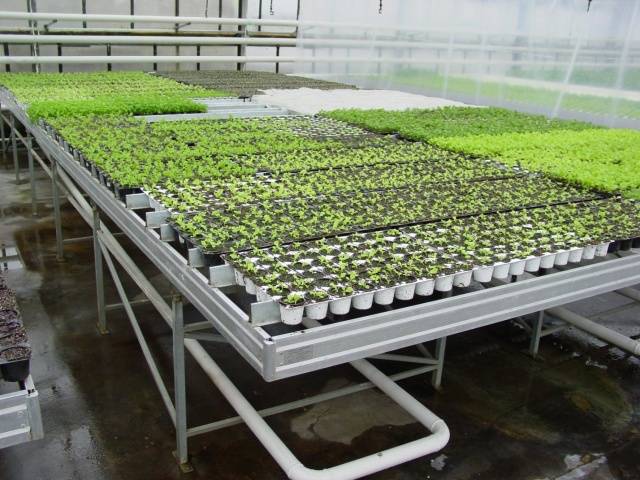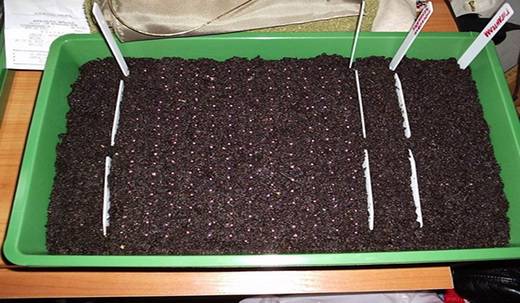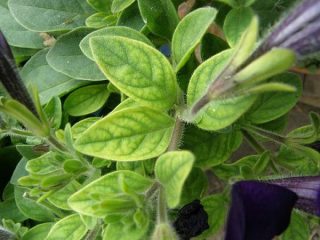Content
Annuals in the garden It’s not for nothing that they are so loved by many generations of flower growers, because in terms of flowering duration none of the perennial flowers can compare with them. Starting from the end of spring, they are able to delight the gardener’s heart until the autumn frosts. And some, even after slight frosts, are able to maintain a decorative appearance.
But in order to enjoy their flowering as early as possible, you need to think about growing seedlings. Indeed, in the climatic conditions of the middle zone, the choice of annual flowers for direct sowing in the ground is very limited. And, most importantly, flowering from them can only be expected by mid-summer.
While many annuals are not at all difficult to grow using seedlings. And this can not only be a fun activity, but will also significantly save your budget, and even become a source of additional income in these difficult times. After all, prices for seedlings of annual flowers are not cheap. And not everyone has the time and space in the house to grow a significant amount of seedlings. It is only important to start, gaining invaluable experience, and over time, many things that seemed difficult to you will be taken for granted.
Why do you need seedlings?
Of course, the main reason why annuals are grown from seedlings is that you can get a plant with buds just at the moment when it is a favorable time for planting annual flowers in flower beds. That is, you can ensure early flowering of most annuals. Moreover, among them there are also those that, when sown in open ground, will not even be able to develop enough leaves by the end of summer, and not just bloom.
There is another reason for sowing many annual flowers as seedlings indoors. The fact is that it is the first two to three weeks of plant life after seed germination that are decisive. During this period, all the most important processes of the growing season begin. That is, the conditions in which the seedlings are placed during this period determine the size of the flowers and the plants themselves, how bright the shades will be and how long the flowering will last. When growing annual flowers with seedlings, light, temperature, humidity and other parameters can be easily controlled, which cannot be said about the conditions when growing in open ground.
So, growing seedlings is necessary or very desirable for annuals in the following cases:
- If flowers are characterized by a long growing season, when 80 to 150 days pass from sowing to flowering.
- Annuals have a very long flowering period, which can last from May to October.
- If the flowers are very heat-loving, they cannot tolerate temperatures below +5°C and need bright lighting for full development.
- If you want to bring the flowering time of annuals closer by a month or two.
Sowing time
You can sow seeds of some annual flowers for seedlings as early as January. This may be necessary for such long-swinging annuals as Chabot carnation, eustoma, tuberous and everflowering begonia, pelargonium, fuchsia and heliotrope.
In February The sowing season can already be considered in full swing. After all, it is in this month that such popular and beautiful annuals as petunia, snapdragon, viola, verbena, salvia, lobelia.
March is the most suitable month for sowing seedlings of most annuals. For example, we can mention such flowers as: alyssum, winged tobacco, Drummond's phlox, cleome, cloves, matthiola, helichrysum and others. You can also sow seedlings and seeds from the first group in March, but then their flowering may be delayed somewhat. In the first half of March, it is also advisable to highlight the growing seedlings, and from the end of March, many plants will have enough light on southern window sills.
In April, many annual flowers can be sown as seedlings; this is usually done in order to speed up their flowering time. Usually sow marigolds, asters, kochia, ageratum, annual dahlias, cellosia, zinnia and others. In April, you can also sow many fast-growing annuals for seedlings, so that they bloom at the end of May.
Seeds and features of sowing annuals
Fresh seeds of almost all annual flowers usually germinate easily, quickly and amicably.
Seed germination
On average, the minimum germination rate of fresh seeds is from 75% (for nasturtium, phlox Drummond, blue cornflower) up to 90% (for aster, ageratum, Chabot carnation, calendula, ornamental cabbage, viola). Over time, germination, of course, decreases, and its percentage depends on the characteristics of the type of flower.
- The seeds of phlox Drummond and aster remain viable for no more than a year.
- Seeds can germinate well in 1 to 2 years gatsaniya, verbena, godetia, helichrysum, foxglove and kochia.
- From 2 to 3 years they do not lose germination ageratum seeds, viola, gaillardia, delphinium, annual dahlias, bluebell, calendula, iberis, daisy, mallow, petunia, sunflower, tobacco, scabiosa and lobelia.
- Up to 5 years, seeds of alyssum, cosmos, sweet peas, snapdragons, Lavaters, nasturtium, marigold and salvia.
- The seeds of cornflower, cellosia and gillyflower do not lose their viability for more than five years.
Based on seed size, the following groups of annuals can be distinguished:
- Small (1 g contains from 5 to 25 thousand seeds) - lobelia, begonia, ageratum, petunia, purslane, daisy, snapdragon.
- Medium (1 g contains from 500 to 600 seeds) - aster, verbena, iberis, salvia, levkoy, tagetes, cellosia.
- Large (1 g contains from 100 to 300 seeds) - calendula, zinnia, mallow, lavatera, cosmos, cornflower.
- Very large (from one to 30 seeds fit in 1 g) – nasturtium, sweet pea, sunflower.
Conditions for seed germination
Absolutely all annual seeds need to create a certain combination of temperature, humidity, access to oxygen and light for successful germination. With humidity, the situation is easiest - all seeds need to create a humid environment for swelling.
But with temperature the situation is somewhat more complicated. Many heat-loving annuals require temperatures above +22°C for successful germination, some even up to +28°+30°C. Others are quite successfully able to germinate even at +10°C, but if the temperature is around +20°C, then the germination time will noticeably decrease. Therefore, the general recommendation for sowing annual seeds for seedlings is to place them in an environment at room temperature.
As for the light, everything is not at all simple here.
There are flowers whose seeds germinate: only in the light, only in the dark and in any conditions.
Most often, light for germination is necessary for those annuals that have small seeds and, accordingly, a small supply of nutrients. For example, petunias, snapdragons, begonias, mimulus, alyssum, lobelia, purslane. The seeds of these flowers must be sown exclusively on the surface of the soil and placed under a lamp or in another bright place for germination.
Other annuals germinate well only in the dark and must be covered with soil.These flowers include: Drummond phlox, marigolds, verbena, castor beans and some other annuals with large seeds. Seeds can be buried in the ground to a depth not exceeding three times the size of the seed itself.
Interestingly, there are flowers that can germinate in any conditions, both in the light and in the dark. Fortunately, such annuals are the majority.
It should be noted that some annual flowers, in addition to general conditions, also have special requirements for germination. Many large seeds require mandatory soaking for 24 hours (nasturtium) and even scarification, that is, mechanical damage to the seed shell (sweet peas).
For better germination, it is advisable to treat the seeds of all annuals (except the smallest ones) before sowing (soak for several hours) in growth stimulants (Epin, Zircon, Energen, HB-101).
Features of sowing
The method of sowing annual flowers for seedlings depends, first of all, on the size of the seeds. All small seeds of the same type are traditionally sown in two main ways:
- Mixing them with sand first;
- In the snow.
Usually a small flat container is taken and filled with light, breathable soil. Moreover, the topmost layer, 0.5 cm thick, is poured from a fine substrate sifted through a sieve. When using the first method, annual seeds are mixed with calcined river sand and evenly distributed over the surface. From above they are lightly sprayed with water from a spray bottle.
In the second method, a small layer of snow is laid on the surface of the substrate and seeds are placed directly on top of it.Since even the smallest seeds are clearly visible in the snow, they can be placed more or less evenly. The melting snow slightly pulls the seeds into the soil and ensures their good adhesion to the ground.
After sowing, the container can be covered with polyethylene, glass or any other transparent lid and placed in a warm place for germination.
Seeds of medium and large sizes are often sown in grooves or individual nests, which can be marked with a match on the surface of the soil.
The largest seeds are often sown in separate cups. They can be placed in a tray and covered with a transparent bag on top to create a greenhouse effect.
Growing annual seedlings
Shoots usually appear a week or two after sowing. But it is better to regularly inspect the plantings after three days and, if possible, open the lid slightly to ventilate the seedlings. When the first sprouts appear, containers with seedlings are moved to the brightest place. If possible, it is better to lower the temperature immediately after seed germination by several degrees, even for the most heat-loving flower seeds, such as balsam, petunia or verbena.
When growing annual seedlings, picking is usually necessary. This is the name for transplanting sprouts at a distance from each other that can provide them with the necessary nutritional area. Often seedlings are planted in separate containers.
Some annuals, such as begonia, lobelia, Shabot carnation, planted at the earliest possible time, in January and February, even peak twice. One - 7-10 days after germination, the second - about a month later.
For annuals planted as seedlings in March and April, one pick is enough. It is usually carried out at the moment the first pair of true leaves appear on the seedlings (not to be confused with the first cotyledon leaves).
A week after picking, the seedlings need to start feeding. It is better to dilute any liquid flower food twice as much as required, so as not to burn the tender roots.
Two weeks before planting in a flowerbed, seedlings begin to be accustomed to open ground conditions, first taking them out into the air for several hours and shading them from direct sun and wind. Every day, the time spent outside is gradually increased.
Seedlings of most annual flowers can be planted in open ground in late May - early June.
Growing annual seedlings is an interesting and educational process that can teach you a lot. As a result, you will have the opportunity to plant your plot with a varied palette of flowers that will delight you throughout the summer until late autumn.




















